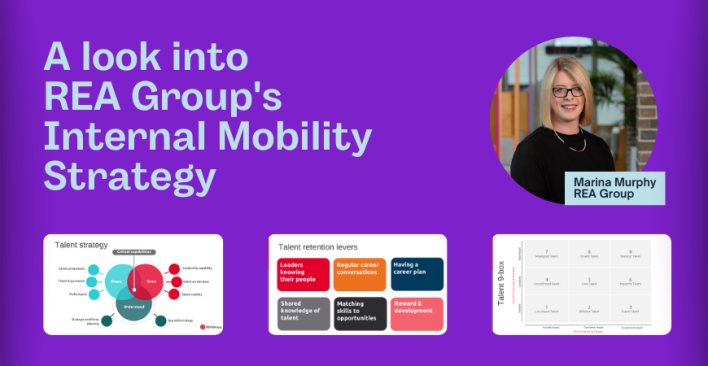How to build a psychologically safe probationary periods that improve the onboarding experience – Part 2

This is part two of a three-part article series that sees D’Neale Prosser questioning the probationary process and the psychological safety that it lacks.
Psychological safety is like oxygen. When it’s in the room, we don’t even notice it. The second it’s gone, it’s all we notice.
The probationary period has an impact on psychological safety and is a missing link when designing your onboarding experience. There are ways to use comfort zones in the beginning phase of the employee lifecycle to improve learning, increase retention and build performance — leading to the successful and swiftly passing through the probation period.
Starting a new job is a stressful situation. There are high hopes that it will all work out, however, there is a looming and persistent worry about losing the job.
A mistake or an awkward conversation can make the heart of a new employee pound, breath quicken, muscles tense and beads of sweat form. This cascade of stress hormone production, physiological and psychological change is known as “fight-or-flight”.
Let’s look at how to build psychologically safe probationary periods that will improve the onboarding experience.
1. Build a safe learning zone.
A new employee starts with apathy, this means caution or concern, a bit wary with the new and how they can contribute. As much as you make them feel welcomed, they certainly don’t feel comfortable performance-wise straight off the bat. By increasing psychological safety, you move a new employee from an apathy zone up to a comfort zone; this is the sweet spot to stay in throughout the onboarding period and allows for optimal learning. Learning that will last and make an impact.
Sitting in a safe learning zone increases learning retention and supports the integration of the new employee into the business as they are now learning, understanding, and then contributing. Others who are around the new employee must heighten their awareness that comfort zone = learning zone. Keep them in there for now.
In your comfort zone you feel safe, steady, and ready to learn. In the same parallel to increasing psychological safety you can build performance accountability and with this comfort, performance and deliverables will take care of themselves as the new employees are resourceful and skilled. That is why you hired them for the job.
Be aware that without building up the apathy (caution) zone to comfort zone, you will move a new employee from apathy to anxiety very quickly when increasing performance accountability, bypassing the learning zone and simply put… ‘start freaking them out’ as it is a threatening situation. A ‘fight-or-flight’ response will kick in, and nobody is performing in that zone.
Increased psychological safety + increased performance accountability (at the same time) = learning zone: where the magic happens in the onboarding experience. We can talk about magic happening outside of the comfort zone when a new employee shakes the ‘new’ title and is safe and secure.
2. Build acceptance through shared experiences.
Numerous studies have shown the clear link between meaningful relationships, social connectedness, and happiness all building psychological safety. Shared experience heightens an experience for us as individuals, they also hold the key to developing these deeper relationships. Through shared experience your new hire can feel accepted, a sense of belonging, and reassurance that they are connected and fit in the new environment.
Shared experiences don’t have to be grand – they can be everyday moments like attending a workshop together, inviting them to sit where you sit for lunch, or walking to grab a coffee down at the local cafe. Ask your existing team to include your new employee in the everyday experiences that just happen in your organisation.
A shared experience allows us to truly feel our own and other’s emotions, to develop our ability for emotional empathy, and to understand each other better. Once we understand each other better, we feel safe in each other’s company. It is simple: make a new employee feel accepted and safe by joining in, and it will give them a sense of belonging.
3. Build stability to perform and deliver.
That feeling of delivering as a new employee is gold. The moment your contribution is felt, whether small or big, is a ‘ding ding ding’ run on the board and can immediately impact the mindset and build confidence that you have the goods to deliver in this new environment.
The relationship between psychological safety and performance is often an unspoken topic of conversation in the probationary period. We often hear comments of ‘it is what it is’, ‘they will make it out the other side’ and ‘just push through it’. As a new employee you have a set of promises about what you bring to the new organisation work-wise, and it is met with a clear set of expected deliverables to ‘hit the ground running’ regardless of what psychological state you are in.
Sadly, once stressed about performance it can be difficult to repair. By setting the new employee up to contribute it increases their stability, building solid ground to perform on. There is a unique opportunity to increase stability throughout the onboarding period, and in turn, to retain valuable employees as psychological safety has been shown to link with outcomes such as job satisfaction, commitment, performance, and trust.
Build stability by having regular discussions about what is being exchanged in the employee/employer relationship. What runs were put up on the board this week that can be celebrated as quick yet impactful wins. This can help clarify goals, drive performance, encourage developmental conversations, and help new employees stabilise their nervous system.
4. Build the opportunity to be an expert.
There is a reason you hired your new employee – they had the skills you were looking for. They brought experience in their backpack that the team and organisation needed. Often the onboarding experience can be a one-sided dialogue with the new employee taking in all of the information to learn a new business and role. They are on probation and quickly forget that it is about them too.
Knowing a new hire is super excited to ‘win’ the new job and bring all of their experience to a new environment – it is important to remember that you hired an expert in something, and it is important to create scenarios or situations where the new employee can bring what they’ve got. They have been building on it for years ready for this step or role.
Have your new employee share their story, create a social space for this to happen to take the formality out of it. They have already gone through an interview process. Keep it light, but make sure it happens. It can increase the fear of not being accepted or appreciated if it’s not important to share their story with everyone.
When collaborating with a new employee, remember they are not there to just learn and observe, they know things … really good things. So be aware and lead with your empathy – remember what it’s like to be new, sitting in a meeting, all existing employees guns blazing in the thick of their work year, you know you know things and you want to show you have the goods to support and stay here. Don’t wait for the new employee to feel like they have to voice up or jump in to get a turn. Make it happen for them.
Ask‘ what do you think?’ A small question with a huge amount of reassurance attached. Reassurance that you want to know what they know. That the new employee is sitting here for a very good reason and that is to make us better. After you ask that question – actively listen, pay attention, ask more curious questions. It is the new employees time to show you their ‘expert’, to build their confidence and the confidence you have in them.
5. Build a massive moment that matters – passing probation.
Now that your awareness is raised that the probationary period has an impact on a new employee’s psychological safety and the onboarding experience – you have complete freedom to waive a probationary period early if you don’t see any alarming risks of doing so. It is there to protect the business; we get that but if there is a limited risk – put the psychological safety of your new employee first and waive it.
If you have a six-month probation, it has been a long and tiresome process for a new employee to prove themselves on a show for 24 weeks. Yes, they also have many great experiences that you provided along the way too. However, just take a moment to think about what you were doing 24 weeks ago, it’s a long time. So, the first thing to improve the onboarding experience for your new employee is to pass them early. It’s a huge moment that matters, maybe not for you, but for them. And make it a big deal, dance in that moment. Celebrate it! It will be remembered.
Passing probation early is the least we can do if they are smashing it and you see them contributing short and long term, it’s why you hired them right?! Immediately psychological safety is increased. Put the probationary dates in your calendar with a set plan to pass early where you can. The joining of a new employee to an organisation is an exciting time, increasing psychological safety is about getting everyone on board whilst improving the onboarding experience for the new employee.
Stay tuned for Part 3 of the series ‘The Importance of Building Psychologically Safe Probation Periods’.
Cover image: Source
Related articles
Leave a Reply
Sign up to our newsletter
Get a weekly digest on the latest in Talent Acquisition.
Deliver this goodness to my inbox!


